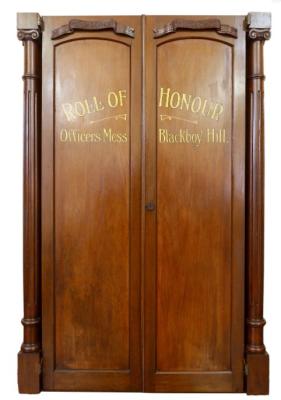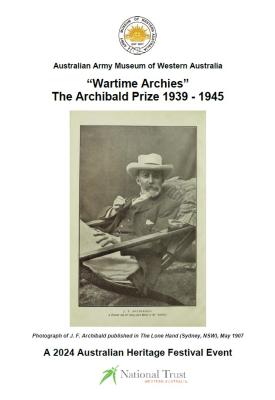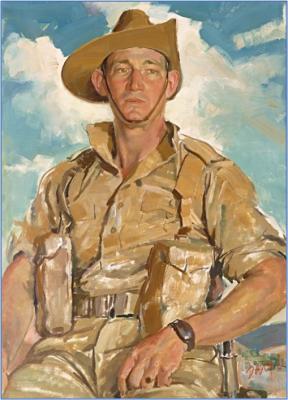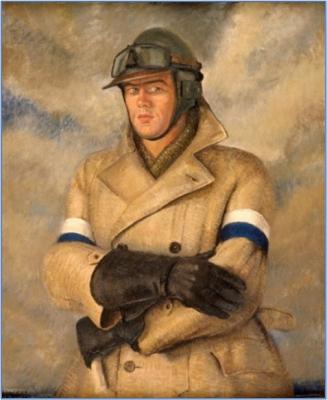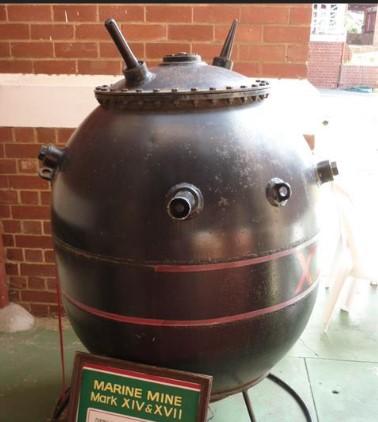British Pattern Contact Type Sea Mine Mk 17
The Mark XVII naval contact mine, was the standard British contact naval mine during World War II. It was ovoid in shape with a height of 122 cm and a diameter of 102 cm. It was willed with a 50/50 mixture of Amotal/TNT with a filling weight of 145 or 225 kilos. The mine was activated if a vessel hit one or more of the 11 switch horn triggers. The Ford Motor Company was contracted to build sea mines in Australia, so this mine either in its entirety or major components may have been fabricated in North Fremantle.
A contact mine is set to float just below the surface of the water with a steel cable connecting it to an anchor to keep it from drifting away. Early mines had mechanical mechanisms, but these were superseded in the 1870s by the "Hertz horn" (or "chemical horn"). The mine's upper half is studded with hollow lead protuberances, each containing a glass vial filled with sulfuric acid. When a ship's hull crushes the metal horn, it cracks the vial inside it, allowing the acid to run down a tube and into a lead–acid battery which until then contained no acid electrolyte. This energizes the battery, which detonates the explosive
A mine unit comprised a mine shell containing an explosive charge case (500lb or 320lb TNT), to be fitted with a primer and detonator in the charge, connected to an electrical battery through an external ‘horn’, which was broken or actuated by contact with the hull of a ship or submarine, thus exploding the mine. The mine shell was affixed to a sinker by clamps. The sinkers were large rectangular boxes with four small wheels at each bottom corner. These fitted inside the rails so that the mine unit could roll along them when hauled aft by the winches. Inside the sinker was a drum of mooring wire, one end of which was attached to the mine case. There was also a depth mechanism, which enabled the distance of the mine below the surface to be set to any predetermined amount. On being dropped into the sea through the traps at the end of the mine rails, the mine separated from the sinker which then sank to the bottom, dragging the mine to the set distance below the surface.
Details
Details
Australian Army Museum of Western Australia
Australian Army Museum of Western Australia
Other items from Australian Army Museum of Western Australia
- Pre 1914, Medical Staff Bicorn Hat and Case, WHITE, Australian Army Medical Corps
- Pre 1914, 2nd Anglo-Boer War, South Africa, Cap Badge of Driscoll's Scouts
- Pre 1914, Magazine Lantern, Fremantle, Fort Arthur Head, 1910
- World War 1, Roll of Honour - Blackboy Hill Officers' Mess
- Exhibition Catalogue - "Wartime Archies"
- Reproduction - "Corporal Jim Gordon, VC" by William Dargie
- Reproduction - "Despatch Rider Sgt Rex Beggs" by Douglas Watson
- Reproduction - "Sister VA Torney, MBE" by Henry Aloysius Hanke



